High St. No. 45 The Bull
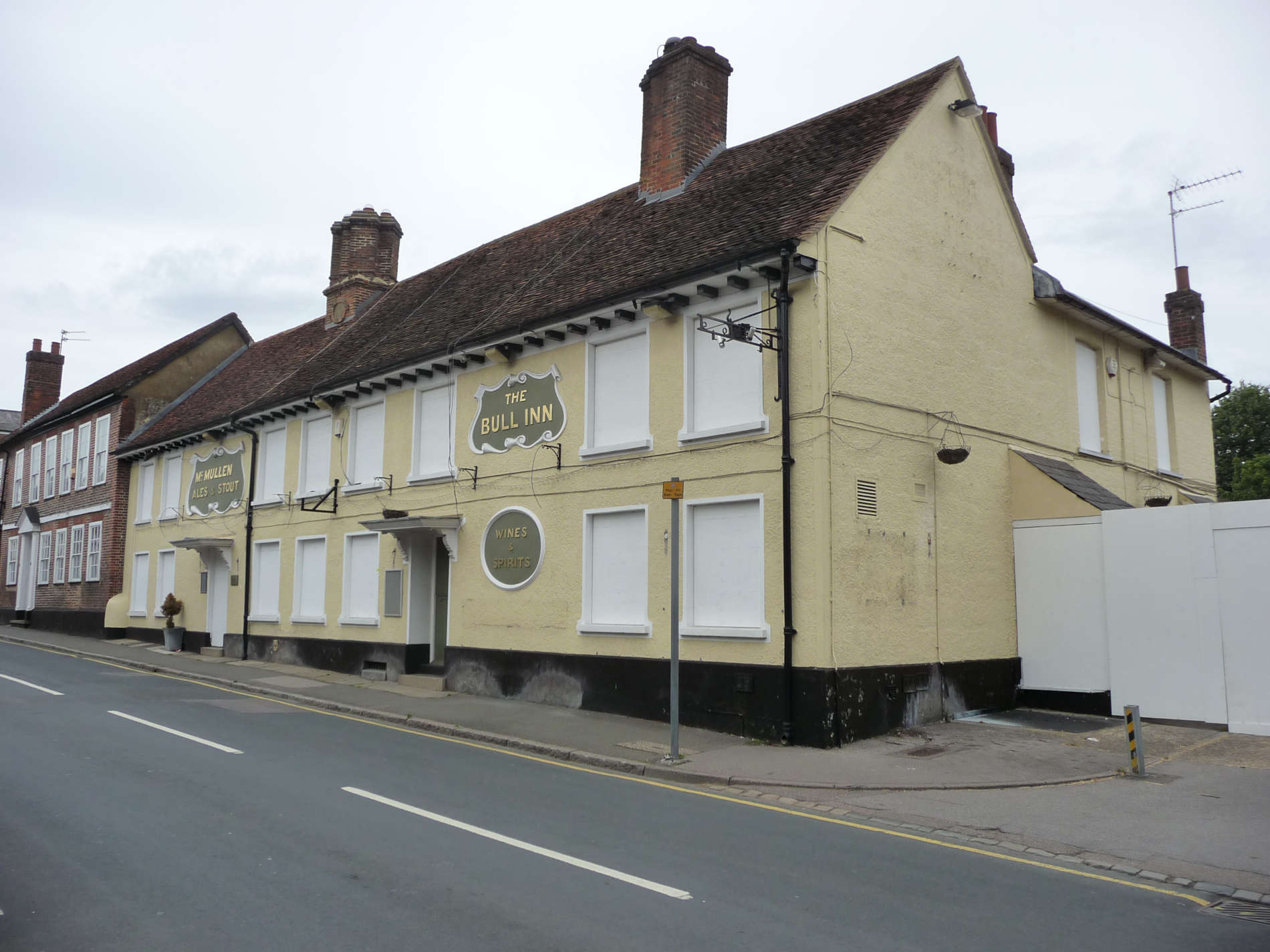
The Bull Today
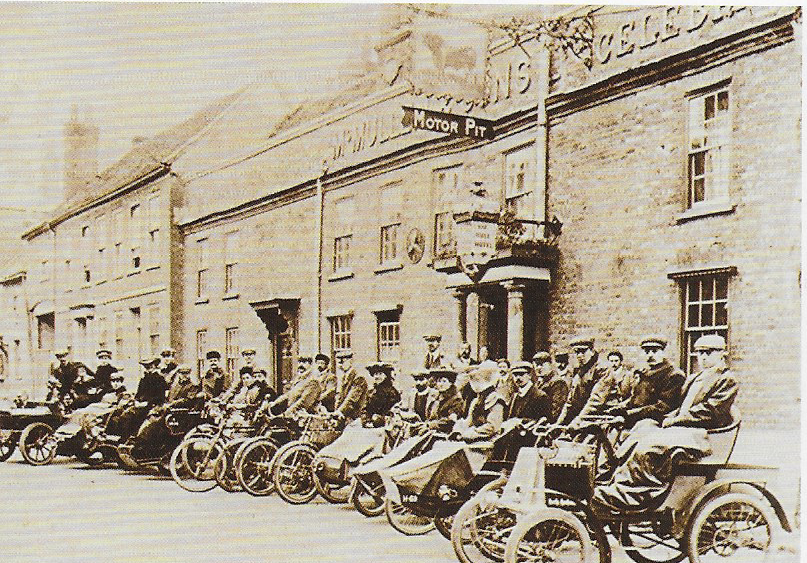
This photo was taken in 1897. This scene depicts opening day at The Bull Hotel, Redbourn for McMullens Brewery, 1897. Landlord, Mr. Davenport can be seen standing at the front door.
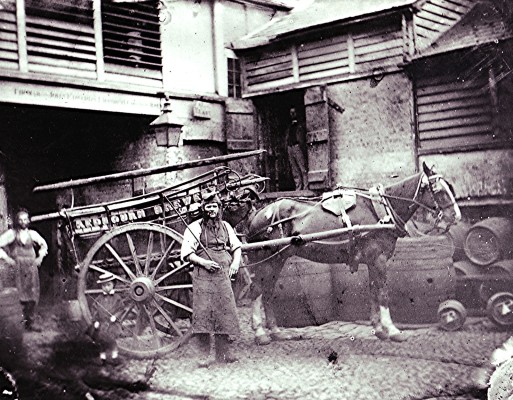
The rear of The Bull looked like this c. 1872.
At this time Redbourn Brewery occupied the
buildings to the rear of the Inn.
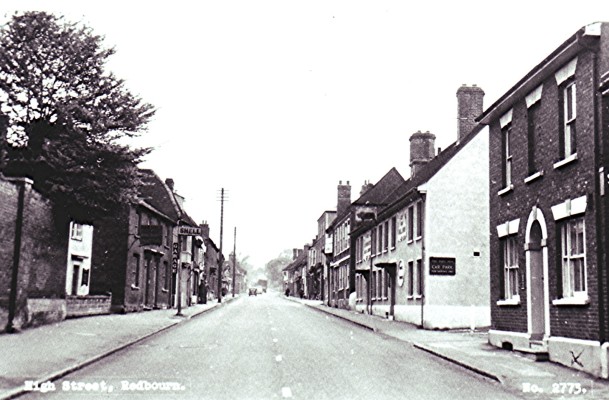
The Bull in 1952 (the white building on the right)
This is basically a 17th century building , a timber framed range with two mid-17th century chimney stacks, the left hand one has a square base with an oval brick panel and six grouped diagonal shafts, the right one has three square shafts in a stepped plan. In the early 20th century the front was covered in roughcast cement, earlier photos show the brick front that was added to the original house in probably the 18th century. The roof is plain tiled, and the eaves have deep cornices. In earlier pictures the main door has two pillars holding up the cornice hood and there was an archway with a room above – the entrance to the rear area of the building. To one side of the main door there was a large lantern which was attached to the building by a huge bracket, but this was taken down in 1902.
The inn had been in the Finch family probably since it had been built. In the 16th century it was under the control of Robert and then in 1595, William. In 1628, ownership passed to the Grey family and the area behind the inn was known as Grayswick. Various licensees operated there in the 17th century, even the name changed to the Black Bull. Ownership passed in 1713 to John Tyler, but the innkeeper was William Fish (perhaps same family as Fish Street Farm). During this century ownership passed through various innkeepers. One Nathaniel Bent (d. 1749) is recorded as blocking the highway with carts and keeping ferocious dogs.
One of the photos gives an idea of the other buildings associated with the inn, a main coach stopping point for the royal Mail with accommodation for travellers. It had stabling for up to 80 horses, a lock up coach house, servants’ quarters above and a brew house (1842 Robert Howie was operating the Redbourn Brewery). A sale catalogue in 1826 listed it as a ‘posting house’ with 13 bedrooms, large dining room, counting house, bar, extensive cellars. By 1829 it was also acting as an Excise Office.
Between 1801-1815, Joseph Stephens was the innkeeper, he was succeeded by his widow, Catherine (till 1826) (see earlier references to Keats and Henry Stephens).Their daughter Catherine and her husband Joseph Lilley returned to run the inn between 1842 to 1845.In 1844 Lady Glamis bought the Inn and it was owned by the family until 1897, when a lot of the Redbourn property was sold off by the family. Inn keepers during this time included brothers- Thomas and John Edwards (c.1860-1879), Benjamin Bennett (1879-1900). During the 1870’s a breakaway group from the Fish Street Chapel held services in the Assembly Room, until their new chapel was built in Crown Street. The Turnpike Trust (Shafford House to Dunstable) met there until 1871. It was also used for legal business and the Manor Court met there until 1896. In 1897, McMullens bought the inn, but not the brewery and in the 20th century licensees have included C. Davenport, H. Upton, D. Feather and B. Orders. It was very much the centre of events in the village, with fairs being held in the yard. One of the photos commemorate the start of the motor cycle event- 150 miles nonstop to Stony Stratford and back (1904 and 1905) – the Albert Brown Trophy. The bull had a garage that sold petrol when F. Roberts was licensee from 1903 -1909. The buildings in the yard are long gone and the site now awaits redevelopment.
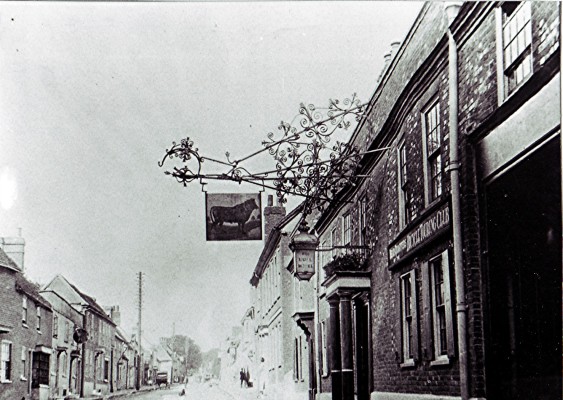
The Bull around 1900